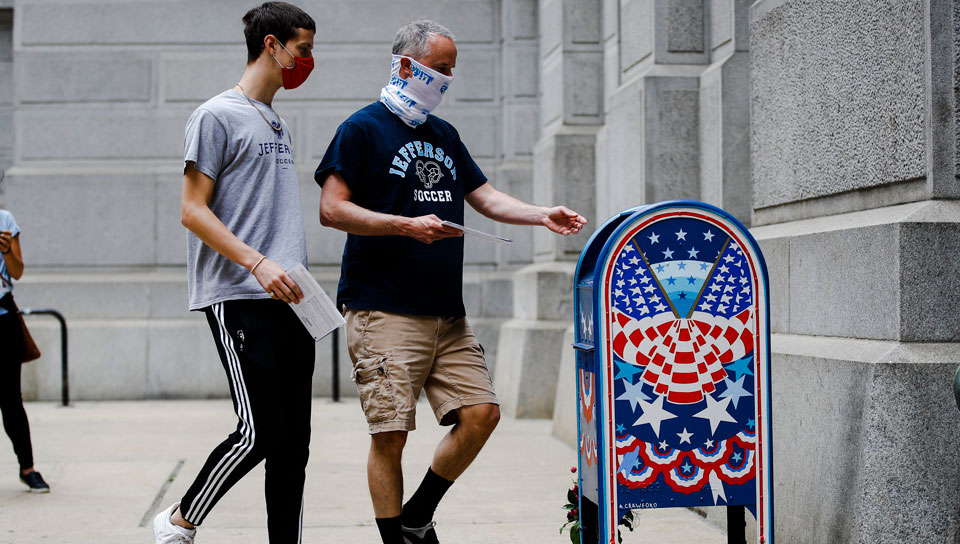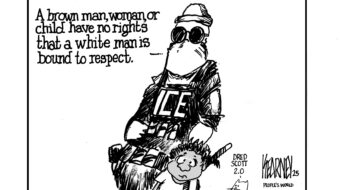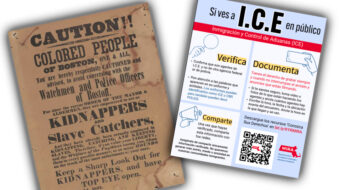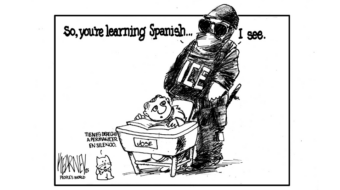
An ominous foreshadowing found within a half-page typed order from the U.S. Supreme Court regarding Pennsylvania mail-in ballots has heightened fears among Democrats about the possibility the high court could be charged with deciding a post-election dispute and ultimately hand over the keys to the White House to Trump—possibly going against the popular vote, or “will of the people.”
Coupled with this rising fear, amid a sea of partisan tension, the news that Trump’s Supreme Court nominee Amy Coney Barrett could be seated as early as next week tips the scales of justice towards a conservative majority, giving the GOP and the president a biased advantage which could deprive voters of a free and fair election.
On Monday, Oct. 19, the high court justices were deadlocked in a 4-4 decision over a Republican lawsuit to reverse a Pennsylvania court order and force election officers there to ignore absentee ballots received after Election Day, Nov. 3. The tie vote left the state court order intact and allowed mailed ballots to be counted if they are postmarked by Election Day and received by Nov. 6.
Chief Justice John Roberts, a conservative jurist, joined his three Democratic-named colleagues in voting to leave the court order in place. The other four GOP-appointed justices said they would have granted the Republican request—and are likely to be joined by Barrett in that support in future cases.
THE COURTS AND THE ELECTIONS:
Coup by court: Republicans prepare legal challenges that echo 2000 fight
Wisconsin GOP loses legal bid to block absentee ballots
GOP voter suppression efforts pop up in Texas, Indiana, North Carolina courts
N.C. mail-in ballots case mixed ruling: Witness requirement remains, error fixes allowed
That conservative bloc, with or without Roberts on-side, will decide the winner in any election-related disputes that arise in key battleground swing states where mail-in ballots or recount fights ensue. A key motivation for Trump calling for a speedy nomination, only eight days after the death of Justice Ruth Bader Ginsburg, was to have Barrett seated in time for any election-related lawsuits that might make it to the high court.
The Pennsylvania Supreme Court handed down several voting-related orders back in September. It extended the deadline for accepting mail-in ballots and allowed voters to submit their ballots through drop boxes, among other options to minimize the risk of coronavirus.
During the state’s June primary elections, tens of thousands of mail-in ballots arrived after the cutoff deadline due to postal service delays—now found to have been intentionally orchestrated by Postmaster General Louis DeJoy—and election officials being unable to handle such overwhelming numbers of mail ballots.
The Pennsylvania Democratic Party and the state’s Democratic secretary of state filed suit to extend the vote count deadline following the June primaries debacle.
“While [the timeline] may be feasible under normal conditions, it will unquestionably fail under the strain of COVID-19 and the 2020 presidential election, resulting in the disenfranchisement of voters,” wrote Justice Max Baer, a Democrat, for the majority.
The Pennsylvania Supreme Court found its decision would enfranchise, rather than disenfranchise, more voters—with the understanding that such a large voter turnout will take longer to certify. Under current state law, clerks can’t begin counting mail ballots until Election Day.
In election terms, all hypothetical of course, if the margin of victory in the presidential race came down to less than a one percentage point in Pennsylvania, as it did four years ago, even the smallest number of mail-in ballots could shift the scales—especially for Democrat Joe Biden. Data on absentee ballots returned so far seem to confirm that Democrats are more likely to vote by mail compared to Republicans.
People’s World Election Town Hall – Oct. 25th – Register here.
The Pennsylvania GOP argued in its petition to the U.S. Supreme Court that “in the middle of an ongoing election, the Supreme Court of Pennsylvania has altered the rules of the election and extended the 2020 General Election beyond the ‘time established’ by the state legislature.” Ultimately, they claimed, this violated federal law and the U.S. Constitution.
Notable in the state GOP’s filing was the use, in part, of an opinion by Justice Clarence Thomas and two other conservative justices in the 2000 case of Bush v. Gore to argue that the Supreme Court should get involved in the case because the lower state court had improperly used the powers given by the constitution to state lawmakers regarding presidential elections.
The Monday order provided no written explanation of the votes, so it’s hard to tell why four conservative justices would have granted the GOP request, or why the other side wouldn’t.
The Supreme Court has never cited Bush v. Gore in any court opinion and stated in its unsigned majority-only opinion that its “consideration is limited to the present circumstances.” It’s important to take note, however, that two attorneys who worked for and advised George W. Bush through the 2000 Florida recount and Supreme Court trial have now donned black robes and sit on the high court—John Roberts and Brett Kavanagh.
That two-decade old link to a previous court-decided election is another possibly ominous foreshadowing of what may become the ultimate test for U.S. democracy so far after Nov. 3.











